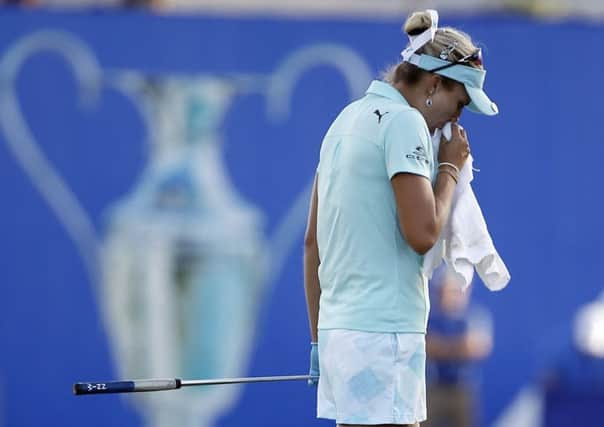Video evidence for golf rules to be limited


A new Decision on the Rules of Golf, which takes effect immediately, has been introduced by the R&A and USGA, the sport’s two ruling bodies, in a bid to make it “fair for all players when applying the Rules”.
The step is effectively a quick fix in the wake of the Thompson incident, which saw the American hit with a four-shot penalty after an armchair viewer reported a ball-marking infringement a day after it had happened in the ANA Inspiration in California.
Advertisement
Hide AdAdvertisement
Hide AdHowever, the R&A and the USGA, along with the main Tours and the PGA of America, are undertaking a “comprehensive review of broader issues that arise in televised competitions, including viewer call-ins”, to see if additional steps are required as part of the set of modernised Rules being introduced on 1 January, 2019.
“We have been considering the impact of video review on the game and feel it is important to introduce a Decision to give greater clarity in this area,” said Martin Slumbers, the R&A’s chief executive of the initial action that has been taken. “Golf has always been a game of integrity and we want to ensure that the emphasis remains as much as possible on the reasonable judgment of the player rather than on what video technology can show.”
In effect, the R&A and USGA are saying that if an incident happens that only video technology could identify and not been seen with the naked eye, then no action will be taken against players in that situation.
An example of that would be a player touching the sand accidentally in taking a backswing in a bunker, something that saw Swede Anna Nordqvist hit with a two-stroke penalty that cost her a chance of winning the US Women’s Open last year.
The new Decision is also aimed at preventing players from being punished by the use of video evidence over determining a “spot, point, position, line, area, distance or other location” in applying the Rules when it comes to replacing a lifted golf ball or the nearest point of relief.
So long as the player does what can “reasonably be expected under the circumstances to make an accurate determination, his or her judgment will be accepted”, even if later shown to be wrong by the use of video evidence.
Slow-motion coverage showed that Thompson clearly remarked her ball in a different position to where she’d lifted it after putting down her marker, not helping herself by the fact she wasn’t right behind the ball as she did so.
She was punished two-shots for the infringement, plus a further two shots for signing for a wrong score. The reaction by some to her punishment led the R&A and USGA to hold talks about the incident at The Masters the following week.
Advertisement
Hide AdAdvertisement
Hide Ad“This important first step provides officials with tools that can have a direct and positive impact on the game,” said Mike Davis, the USGA’s executive director. “We recognise there is more work to be done. Advancements in video technology are enhancing the viewing experience for fans but can also significantly affect the competition. We need to balance those advances with what is fair for all players when applying the Rules.”
The working group, which also involves the LPGA, PGA Tour, European Tour and LET, will look at call-ins from TV viewers and also the application of penalties after a score card has been returned.